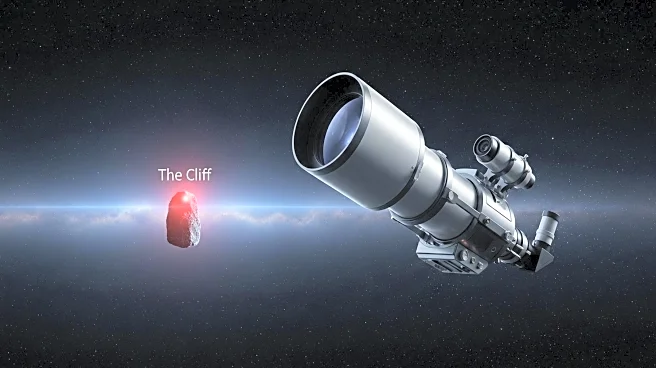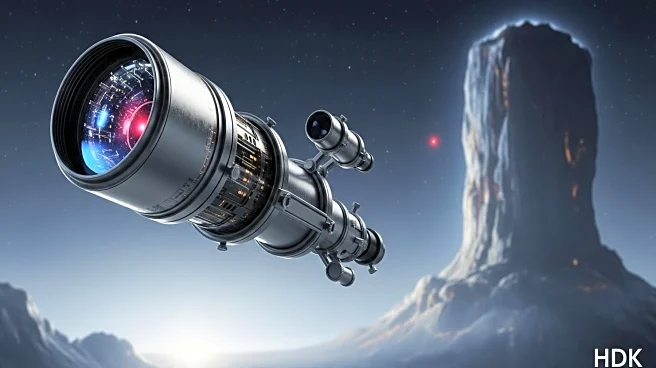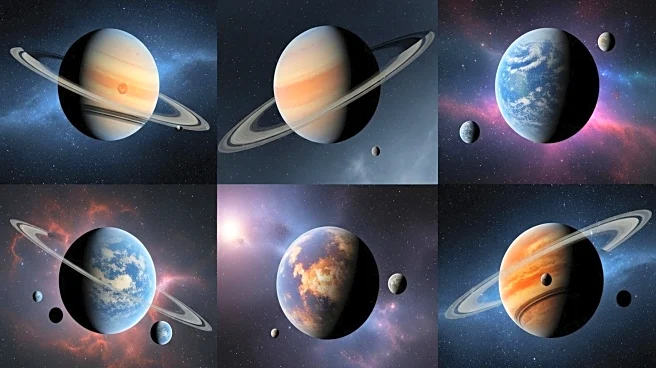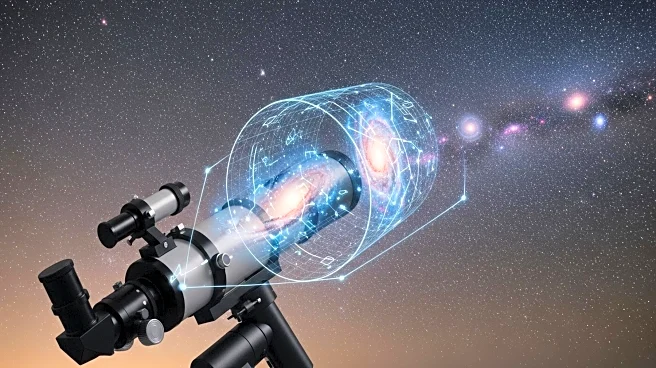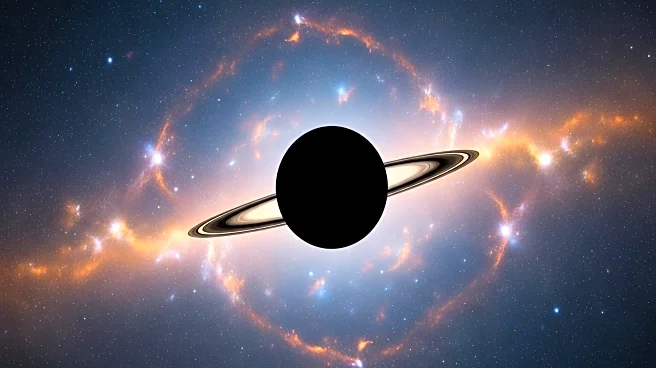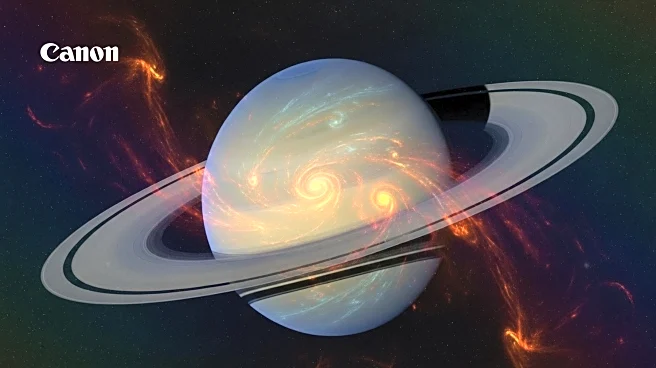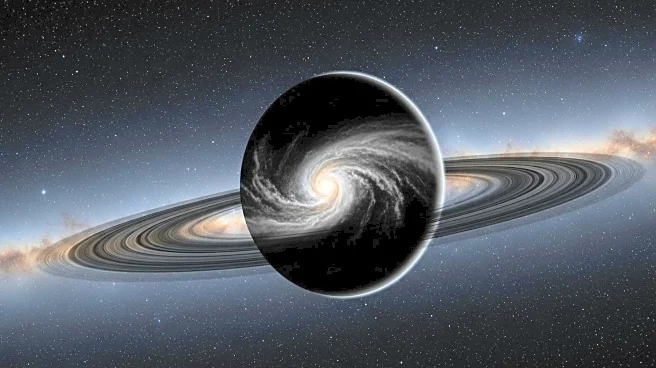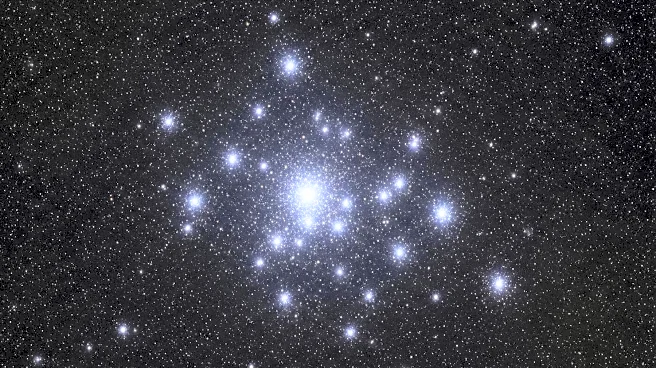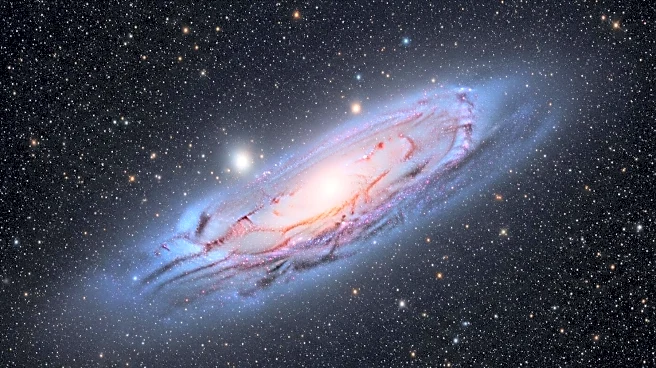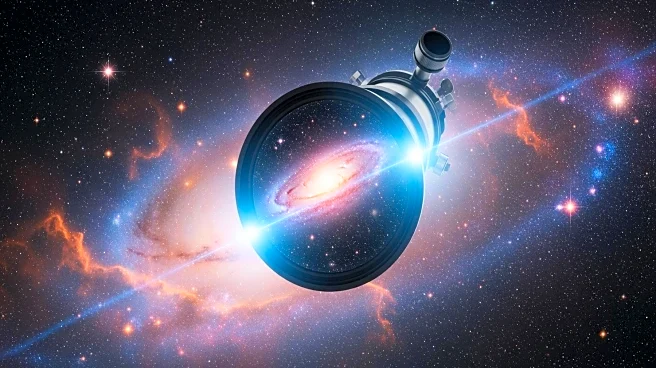What is the story about?
What's Happening?
The James Webb Space Telescope (JWST) has provided new insights into the star-forming cloud Sagittarius B2, located in the Milky Way, approximately 27,000 light years from Earth. This cloud is one of the most active star-forming regions in our galaxy, producing stars at a rate of 0.04 solar masses per year. Recent observations using JWST's Near-Infrared Camera (NIRCam) and Mid-Infrared Instrument (MIRI) have revealed a structured morphology within the cloud, identifying both low-extinction and high-extinction populations of massive stars. The study also discovered new candidate H II regions around massive stars, previously undetected by radio telescopes. The findings indicate that star formation is ongoing in the eastern, less dense part of the cloud, while radiation escapes from one of the star-forming regions, suggesting that infrared photons can find escape routes even in dense regions.
Why It's Important?
The observations of Sagittarius B2 by JWST are crucial for understanding star formation in extreme environments. The ability to detect previously hidden massive stars and ionized structures offers a transformative view of how stars form under some of the most challenging galactic conditions. This research enhances our knowledge of the processes involved in star formation and the evolution of star-forming regions, contributing to the broader understanding of the Milky Way's structure and dynamics. The study also demonstrates the capabilities of JWST in providing high-sensitivity observations that can uncover new details about the universe.
What's Next?
The findings from JWST's observations of Sagittarius B2 will likely lead to further studies aimed at exploring the cloud's star-forming processes in greater detail. Future research may focus on the newly identified H II regions and the mechanisms allowing radiation to escape from dense star-forming areas. These studies will continue to leverage JWST's advanced instruments to gain deeper insights into the formation and evolution of stars in the Milky Way.
Beyond the Headlines
The study of Sagittarius B2 highlights the importance of advanced space telescopes like JWST in expanding our understanding of the universe. The ability to observe star-forming regions with unprecedented detail opens new avenues for research and discovery, potentially leading to breakthroughs in astrophysics and cosmology. The findings also underscore the collaborative efforts of international teams in utilizing cutting-edge technology to explore the cosmos.
AI Generated Content
Do you find this article useful?


